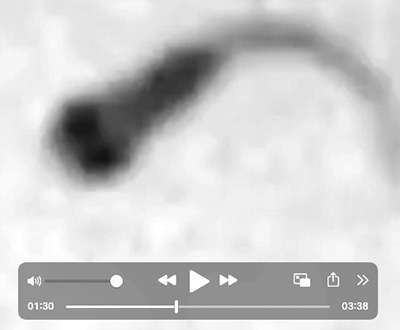In a daily fight for survival, primitive nervous systems evolved the ability to escape from predators using reflexive reactions that save animals from being eaten. As nervous systems became more complex, animals began to modulate their fight or flight reflexes by identifying relevant features and objects in the world. For example, when walking through a room full of obstacles, humans will covertly map the locations of obstacles and avoid crashing into them while performing other behaviors. Researchers were previously unsure whether zebrafish also process external information about objects in their environment in order to inform their reflexive escapes. A recent study in the Engert lab showed that zebrafish have this exact capability. It was supervised and designed by Andrew Bolton and performed in collaboration with co-lead authors Hanna Zwaka and Olivia McGinnis.
Typically, zebrafish respond to non-directional acoustic stimuli that mimic a predator via near instantaneous fast escape swims. The direction of these escapes is completely random – this is an evolutionary advantage that prevents predators from predicting where fish will go as they attack. However, when startled with the same acoustic stimuli in the vicinity of solid barriers, zebrafish consistently escaped away from barriers, suggesting that they map the locations of collidable objects “just in case” a predator should arrive.
“What’s particularly exciting is that the startle reflex is ballistic and fast – once initiated the fish can’t do anything about it. These can go stochastically to the left or right, but this study tells us that these very fast unspecific responses can be modulated by another modality” says Florian Engert.
“The behavior is modulated by the internal state of the animal, depending on what the animal sees in the environment,” says Hanna Zwaka, adding “we know it’s visual because if you have the animal in the dark, they will crash into the barrier.” This sort of planning based on environmental information implies that zebrafish extract more information from the world than we previously thought.
Further experiments by the team show that the fish distinguish how far they are from any given barrier, and ignore those that are out of collision range. This means that fish possess the ability to characterize the location of objects instead of simply responding to current retinal input patterns.
Andrew Bolton suggests that this is the most interesting part of the project. “Animals don’t get depth information for free – we have to infer it from our 2D retina. It’s hard to infer depth – we make it up as we go. Hopefully our new models and experiments will show how this actually works,” says Bolton.
Vikash Mansinghka, a co-author on the work who leads the Probabilistic Programming Group at MIT, hopes to use the research as the basis for developing integrative cognitive models using probabilistic programming to make predictions about distance computation in brains. “One of the most exciting things this research shows is that larval zebrafish can be used as a model system to study the perception of structure in the world. The zebrafish can also be used to study probabilistic inference, because inferring 3D structure from a 2D image is a fundamental form of probabilistic inference.”
Having uncovered in this study that the Brainstem Escape Network is biased by barriers, future experiments in the Engert lab will attempt to extend these findings by embedding the fish in a 3D virtual reality that re-creates their free swimming experience with barriers.
By Andrew Bolton and Rachel Paiste



